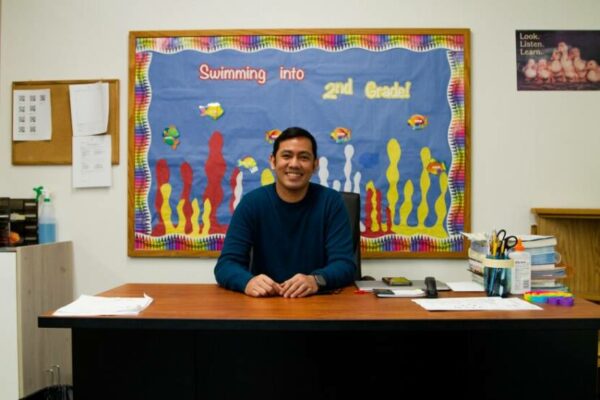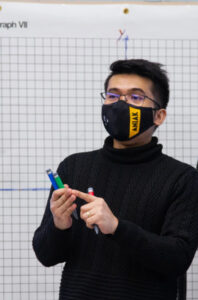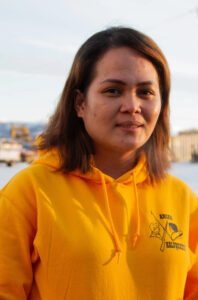
This school year, more than half of the Kuspuk School District’s entire teaching staff is from the Philippines. And nearly all of them are new to the U.S.
One of those teachers is Rovan Agad. He teaches math and coaches junior varsity basketball at Aniak’s high school, about 90 miles northeast of Bethel in Western Alaska. He said he’s happy to be here, finally connecting with his students in person. He arrived from the Philippines in October 2021.

He said he applied for teaching jobs in Alaska because he had been let go by his former school when it shut down during the pandemic. Agad isn’t the among four teachers from the Philippines in Aniak this year. They’re all roommates.
The nearby Lower Kuskokwim School District, based in Bethel, also hired teachers from the Philippines this school year, though a smaller share of its new teachers are Filipino. Out of 82 new teachers the school district, 10 are from the Philippines.
At the Kuspuk School District, 19 of the 21 new teachers are from the Philippines, and 20 out of 39 of the district’s total teachers are from the Philippines.
Both school districts used the Alaska Teacher Placement Agency to hire teachers last year. A spokesperson for the agency said that it does not advertise in the Philippines, but accepts applications from all over the world. The spokesperson said that she saw an increase in the number of Filipino applicants compared to the year prior.
Kuspuk School District Superintendent James Anderson said that he didn’t necessarily look for applicants from the Philippines. Anderson said that he simply hired the best and most experienced teachers. It just so happened that nearly all of them were from the southern Philippines and speak a Bisayan language as their native language.
The Filipino teachers in Aniak all mentioned one reason to come to Alaska.
“It’s kind of a very shallow reason, but because of the snow,” said second-grade teacher Jay Mojello. “We don’t have snow there!”
Mojello said, like the other teachers, he also had a more serious reason for coming to the U.S.: the salary. Aniak teachers say the pay is about 10 times higher than in the Philippines. Mojello needed to pay off his debt and send money back to his family.

So did Kaycee Limod, a sixth-grade teacher. But for her, it was an extra difficult decision to come to the U.S. She had to leave her husband and young baby at home.
“He’s already two. I just, I just miss him,” Limod said. “I asked him, ‘If you can, please give me this opportunity. Be with our son, and then I’ll get you.’”
Limod said that either she’ll join her family back in the Philippines or she’ll bring them to Alaska. She said she’s enjoying learning a new culture and gaining professional experience.
That experience, however, has come with growing pains, said Limod and the other teachers.
“Every time I give them instruction, they don’t listen to me. And the first week, first, second week there I was here, I was really crying. Every time I go home, I always cry because I feel like I’m not an effective teacher,” said Limod.
But she said now, about halfway through the school year, she and the students have found a good rhythm.
There’s a good rhythm at home too. The four Filipino teachers share a four-bedroom, one-bathroom apartment across town. They said that it helps them save on costs.
The teachers haven’t decided yet whether they’ll stay in Aniak for another school year. They say that overall they like Aniak, but they dislike the nearly hour-long walk to school on cold, dark winter mornings, and the lack of emergency medical care available in the community.
But if they leave, they said they would miss their students and the camaraderie.

On Fridays, the four colleagues hang out and watch movies.
Each day, the men cook and the women do the dishes. Mojello makes breakfast and Agad makes dinner. He’s been blending Alaskan and Filipino flavors in the kitchen. They say that the community has been generous with gifting them subsistence foods.
“We had moose adobo. We got moose tapa. We also had salmon,” Agad said.
The teachers have until Mar. 4 to let the school know if they’ll be returning for the 2022-2023 school year.
[Sign up for Alaska Public Media’s daily newsletter to get our top stories delivered to your inbox.]




